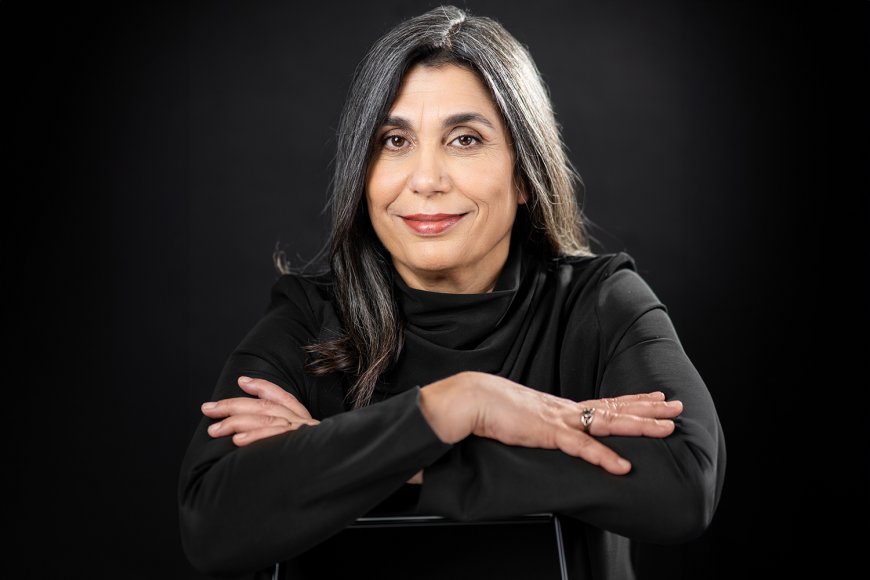
During a peak passing period at Stanford University, the new McMurtry Family Director of Stanford Live biked through crowded roundabouts, sandstone archways, and clusters of computer science students toward the heart of campus. Why? Iris Nemani was on her way to stand behind a table and speak to students about the arts.
“It’s my philosophy in everything that I do. The way I work across teams and the way I curate. Nobody has the market on the best ideas, so I’m always interested.” Nemani said. “And if I’m going to curate for the students, if I want students to come, I need to ask them what they’re interested in.”
At the tabling event, she discussed Stanford Live’s 2025–2026 season. Titled Amplifying Voices, it is the first season she has curated for the premier arts presenter.
According to her, the season’s organizing principle asks “who is on our stages and who is not?” and seeks to fill visibility gaps so all voices are represented.
The season opened on Oct. 3 and runs through May. Over 60 performances of music, dance, theater, spoken word, film, and comedy are scheduled. Highlights will include performances by soprano Nadine Sierra, Broadway’s René Elise Goldsberry, literary and comedic sensation ALOK, singer-songwriter Angélique Kidjo, jazz vocalist Samara Joy, and bassist/composer Mali Obomsawin.
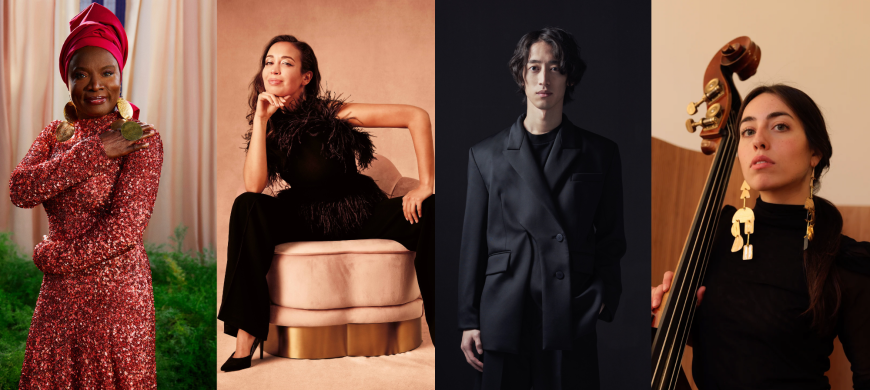
Nemani, who began her tenure at Stanford Live in April, 2024, said that year's presidential election inspired her to intentionally place women at the forefront of the program. “Often when we curate, we look at what is happening in the world around us. I really feel like we need to see more women on our stages and we need to hear from women's voices, because I think we had a hard time imagining being led by a woman,” she said.
“When I’m amplifying voices, it’s the voices of women," she continued, "it’s the voices of artists who come from all sorts of different places and are informed by different creative practices, not just the Western European tradition. The student body and their community is so diverse, and it’s really important for those in the audience to imagine themselves on those stages.”
In an era in which American universities and DEI programs are being targeted and threatened, is Nemani (a Canadian citizen) concerned about potential political blowback?
“I feel like the work of leaning in and making sure that I can offer artists a platform to do their work is so critical right now. Am I going to talk lots about the diversity of the program? We are letting the artists tell their story and that's my responsibility,” she answered.
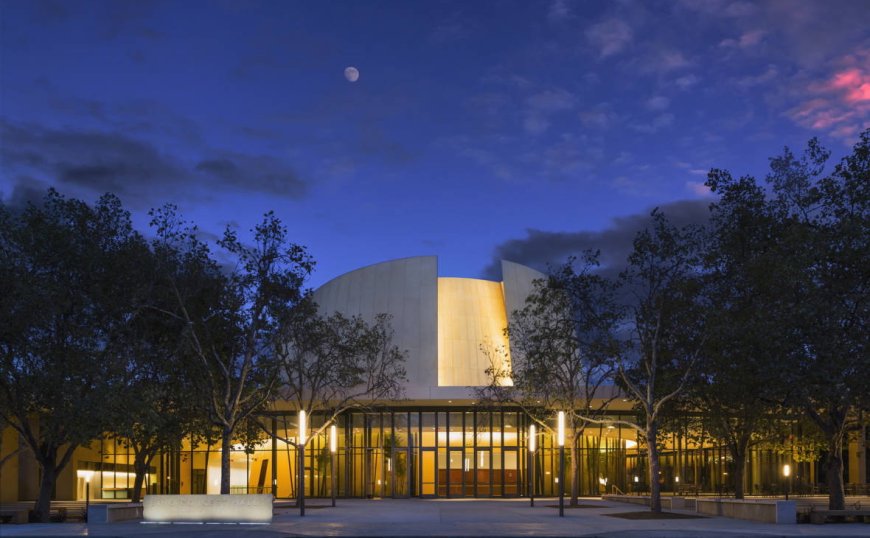
The administator believes that live performance as a medium has a unique ability to unite disparate audiences and enhance empathy. “We need art. Like food and shelter, we need culture. We need coming together,” she said. “Through live performance, we learn ultimately how to share space. I think that we are kinder to each other when we see each other face to face.”
As the leader of the largest performing arts institution in Silicon Valley, perhaps Nemani’s work is more important now than ever. “Sometimes, people in Silicon Valley get so excited about AI that they think it can replace human artists. Live performance reminds us why it can’t,” said Sarah Lewis, a classically trained vocalist who studies Music and English at Stanford.
“Having a robust performance institution in the middle of Silicon Valley is a really important way of reminding some of these big, smart minds at the forefront of what is currently changing society what being human is about," Lewis continued. "Art is how we express that we are human, and this is how human beings need to make art.”
Prior to assuming the directorship at Stanford Live, Nemani served as chief programming officer for Toronto’s Harbourfront Centre, director of operations for Dancap Productions, and company manager for Live Entertainment Corporation of Canada (Livent). At Livent, she played a crucial role in the pre-Broadway development of Lynn Ahrens and Stephen Flaherty’s musical Ragtime, from its 1996 world premiere in Toronto to its 1997 American premiere in Los Angeles. Nemani said Ragtime is her “proudest moment in theater” due to the work’s beauty, production values, and “very, very special story.” (The second Broadway revival of Ragtime opens on Oct. 16 at Lincoln Center).
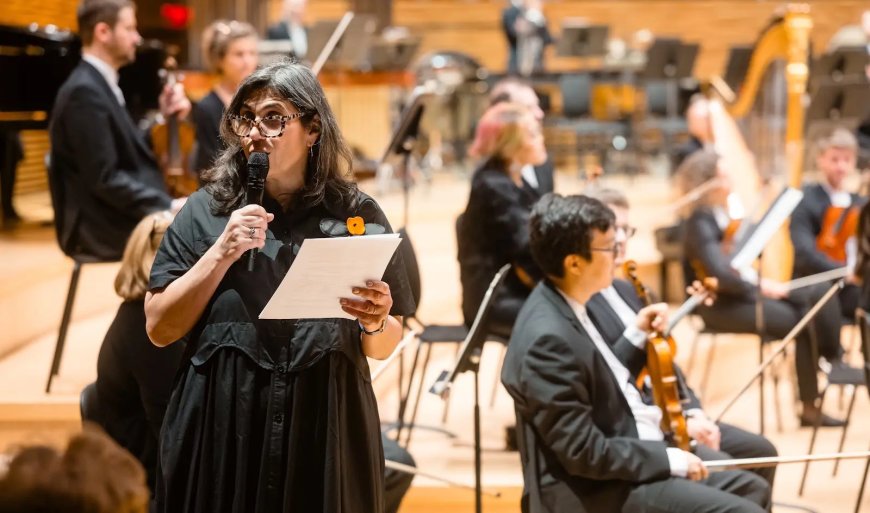
When curating, Stanford Live's director said she likes to establish a framework — be it repertoire, an idea, or a story — to explore. She then fills the framework with a spectrum of related artists and performances.
Where might Nemani look for artists? “We look to our colleagues,” she said. “Who is playing at Carnegie Hall? Who is having their debuts? Who is the opportunity that we can bring from the East, even Eastern United States, to have their Western debut and launch them here?”
In the first half of this season, she is most enthusiastic about Mexican jazz vocalist Lucía, Colombian cellist and BBC Next Generation Artist Santiago Cañón-Valencia, and Japanese pianist Hayato Sumino, whose Oct. 26–27 shows in Bing Concert Hall are already sold out.
“[Sumino’s] going to do this incredible [version of Maurice Ravel’s] Bolero that I’m so excited about on four pianos. It’s going to be rock star level,” she said.
The classical programming this season focuses on works by Ravel in celebration of the French composer and pianist’s 150th birthday. A self-prescribed lover and patron of classical music, Nemani said she aims to satisfy the classical community’s diverse preferences by programming recitals, chamber groups, new music, and tried-and-true orchestral works.

When curating for students, Nemani looks for stories that might resonate with them. Breaking Stanford Live tradition, she programmed a number of theater pieces and established a new series called Direct from Edinburgh Festival Fringe. Three productions from the cutting-edge festival will be presented, the first of which is titled Burnout Paradise. “They’re the perfect kind of works to bring to a campus because they’re a little bit edgy, a little bit raw.”
Many artists who visit Stanford Live are asked to give masterclasses for select Stanford students to participate in and the public to observe. Although masterclasses have historically been a staple of Stanford Live, Nemani aims to leverage her relationship with artists to program even more.
“I find it fascinating to watch them. Students take in the artist’s feedback, and then when they play their piece again you hear the nuance of the difference. You realize how intricate and how much emotion and intention is put into every note of a performance,” she said.
The Department of Music is taking a page out of Stanford Live’s book this year as the vocal studies program has welcomed Scott Ordway for a yearlong residency. The composer will collaborate with students on new works.
Although Stanford is often lauded as a STEM school, the university launched its Stanford Arts Initiative in 2006 to bolster the arts on campus. In the past two decades, the initiative added arts programs and built robust arts infrastructure including Cantor Arts Center, Roble Arts Gym, Frost Amphitheater, and Bing Concert Hall — the home of Stanford Live.
“Every single concert I go to at Bing, I love,” Nemani said. “I think it's incredible acoustically, particularly for unamplified music”
Nestled east of Stanford University’s iconic Palm Drive, the 842-seat hall is oval in shape and features large convex sails that provide optimal acoustic reflection. With hardly a straight line in sight, the seating terraces and walls are flanked in undulating wood that takes the shape of a sine wave (specifically an Eb musical note) — an element of the space that is both aesthetically pleasing and helps to diffuse sound.
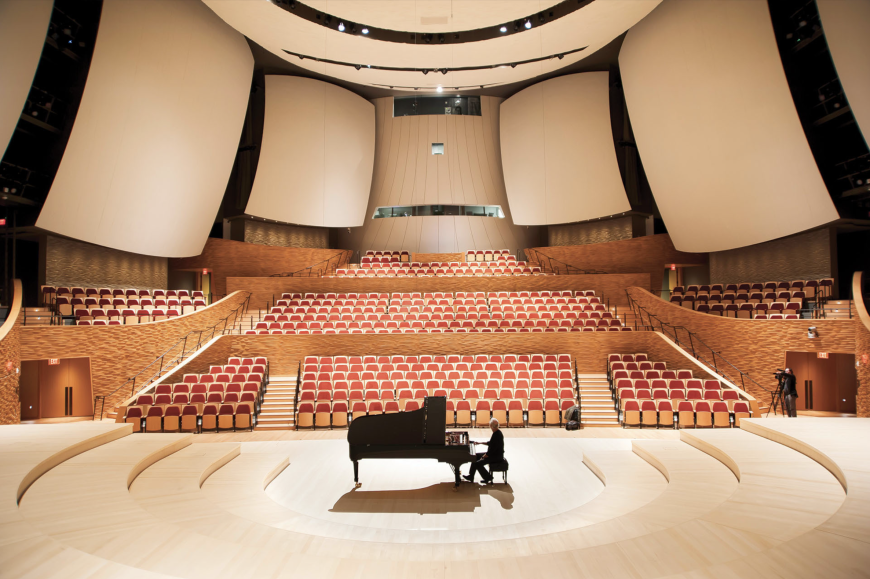
Some artists consider Bing to be among America’s top five performance venues. “I have been told by artists that the other artist in the room is the room,” Nemani said. “I do feel like I have a responsibility with this concert hall to offer it to artists to perform in.”
Sarah Lewis has performed in Bing for Stanford Chamber Chorale concerts, Brandon James Gwynn’s musical theater piano bar (replicating Marie’s Crisis in New York), and High Holidays religious services. This month, Lewis sang Kol Nidre in Bing for Yom Kippur. Although she was nervous to sing the solo prayer a cappella, she leaned into the acoustics of Bing for support.
“When you’re singing a piece that’s very ancient, gravid, and spiritual, Bing’s massive resonance gives it this magical quality. It feels like you’re really tapping into something,” Lewis said. “Every time I sing [Kol Nidre] I wonder, ‘am I going to do it properly?’ It’s not supposed to be a performance; It’s the musical half of the prayer. Having this space to do it in makes me feel like all I have to do is tap into the resonance that’s there, and this will feel legitimate.”
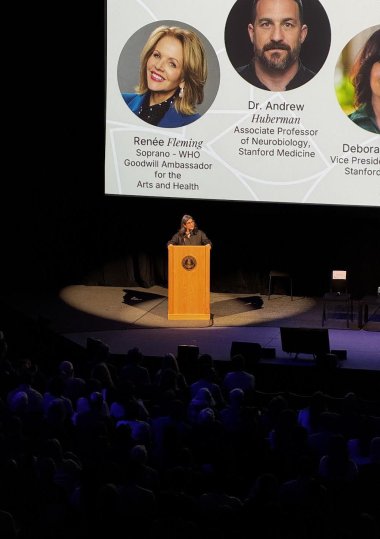
For Stanford Live’s 2026–2027 season, Nemani is planning a framework that will “embrace the future” by highlighting artists under the age of 35, showcase the guitar as an instrument, and acknowledge America’s 250th anniversary by platforming artists who have become naturalized American citizens — as Nemani put it, “those who have come from away, who have decided to make the United States their creative home, and are making this place creatively richer for it.”
More than anything, she hopes that audiences feel welcome at Stanford Live. “I want people to feel like Stanford Live is a place for them, that they belong there,” she said. “I’ve been doing this a long time, and we really are better when we’re together.”




